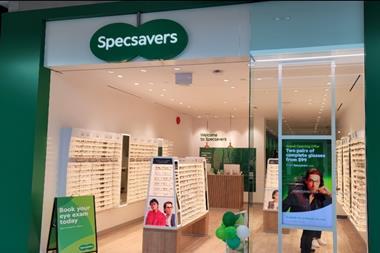Marketers have always been the biggest users of customer data. But by analysing it to create deeper insight, retailers can make their marketing budgets stretch further. Joanna Perry investigates
![]()
Exclusive whitepapers for Retail Week readers
- Smart customer centricity: The analytical advantage
- Size Optimisation for Retailers: How to effectively stock sizes of each item in each store – into a profitable advantage
- SAS Solutions for the Grocery Industry
Retailers have realised that simple, untargeted marketing email campaigns will not be the saviour of their top lines.
There is already an acceptance that a little more intelligence needs to be applied to email campaigns if you want your customers to keep opening emails week after week, month after month.
This view is spreading to other forms of marketing. A spotlight is being shone on the quantifiable results of marketing campaigns in all channels - and their impact on customer behaviour.
Dave Buckingham, commercial director for the insight and communication division at Loyalty Management Group, which runs the Nectar scheme, says that loyalty scheme data can be used to track trials of marketing initiatives. For example, you can run a trial of a marketing campaign and compare the basket analysis data with a control group in other stores to see what impact it has had. These tests can even be run in a single store.
In the same way, using loyalty card data, product launches can be trialled in a few stores; and customers who purchase the new product can be contacted in a targeted survey. This also allows you to gather intelligence on whether the customers who buy your new product are the ones you thought would, which helps inform the marketing decisions for a wider launch. Buckingham says this type of testing is invaluable, as the first few weeks of a product in-store are crucial to its longer-term success.
Multichannel opportunity
Not many retailers are this advanced. SAS customer intelligence practice head Steve Georgiadis says: “Those that have been collecting customer data have invested in analysing it, but most are fairly basic in what they do with it. The strategy is clear, but most organisations have become a little stuck in their ways, so the real opportunity comes with multichannel integration.”
He adds: “Retailers have used customer data to segment and target offers traditionally, but a lot of the time this hasn’t led to hugely differentiated communications for different customers.”
Retailers need to become more dynamic with how they segment and target customers when marketing to them, because shopping habits are changing so quickly.
“Segmentation tends to be quite a static and blunt tool. A retailer will place its customers into groups, put a tick in a box and say the job is done, not revisiting or revalidating for many months or even years,” says Georgiadis.
Marketing can be made more appropriate by thinking about consumers’ typical patterns of purchases - and using that to drive their interaction.
For instance, Buckingham says that Sainsbury’s can track a new mother when she starts shopping for nappies, and then map her journey as the baby grows older, and match her retention programme to this life journey.
This same intelligence needs to be applied to evaluating the success of marketing campaigns - and if it happens in real time, retailers have
the choice of reallocating budget to the best performing marketing mediums more proactively.
Georgiadis explains: “In terms of marketing mix planning, brands set out their strategy, work with a media buying agency and align their plans by looking at their historic marketing and sales data, as well as data from third parties, such as Nielsen. Then they would plan marketing for a period of time, maybe a season. The limitation is that there is no detailed analytical modelling, and it doesn’t lend itself well to reacting to what is going on in the market.” Beyond this, marketers will be able to use analytics to forecast how changes in their marketing mix will affect customer demand.
“We have applied analytics to the media mix problem, with all the data applied in a modelling process to give business users access to a dashboard where they can see how changes to the mix can affect the outcome of their marketing programmes,” says Georgiadis.
He admits that while the skillsets to create these analytical models are specialist, and at the moment it is mainly manufacturers and FMCG companies taking this approach, retailers that are spending £40m or more a year on marketing could get the same benefits.
In the longer term, this way of working will filter down through the sector, but smaller retailers can at least begin by putting in some performance management around their marketing.
Boots Opticians: a single view

Boots Opticians is in the fortunate position of being able to collect a combination of lifestyle and clinical information from customers when they are having an eye test and choosing glasses. About 50% of its business comes from its existing customers, and is driven by the recall programme, where the company contacts customers to remind them to come in for an eye test.
So its ability to leverage customer information is critical to the continued success of the business. It also means that all communication must be personalised to some level - even if it is only the timing of when the message is sent that is unique to each customer.
Before Dollond & Aitchison and Boots Opticians merged, Dollond & Aitchison was already working towards a vision of creating a single integrated platform for all customer and transactional data. It is now beginning this journey for the Boots side of the business.
Boots Opticians’ IT chief Paul Willows spoke about the project at the Retail IT Summit in late September and explained the company wants real-time access to customer and clinical data across all channels, and to be able to create customer segmentation analysis.
Willows said that this will empower colleagues on the front line and plays to the Boots strategy of differentiation through service. At the same time, the customer insight will drive an improved direct mail programme. Already it has been able to reactivate lapsed customers by the cleaning up of data that has occurred with one platform.
Willows said that if Boots got its mailings wrong its sales volumes would drop off a cliff. By using insight to target offers and cross-sell and up-sell opportunities to the right kind of customers, the business has witnessed a 4% to 5% jump in response rates to its mailings, which is significant, bearing in mind the volume of mailings Boots does.
There is a further opportunity for the business to work closely with its colleagues in Boots’s health and beauty division - thanks to the Boots Advantage loyalty card - to understand how customers shop across the two businesses and improve cross-sell opportunities.
Not so web wise
Some 65% of online marketers in the UK spend less than 5% of their monthly marketing budget on optimising the conversion of website visitors into buyers. Just 16% are basing decisions on the marketing content they display on visitors’ profiles.
The 2009 Omniture UK online conversion report, which questioned over 100 UK marketers, further revealed that in seven out of ten cases it was the marketing executive who was responsible for deciding the promotional content on the site.
Of those, almost half said that there was no process involved when deciding what that content should be. Omniture says the figures strongly indicate that an opportunity exists for online marketers to personalise content and offer site visitors a more relevant experience.
Know your customer, control your business
- 1
- 2
- 3
- 4
- 5
- 6
 Currently reading
Currently readingMarketing: The perfect message mix
- 7
- 8
- 9



































No comments yet